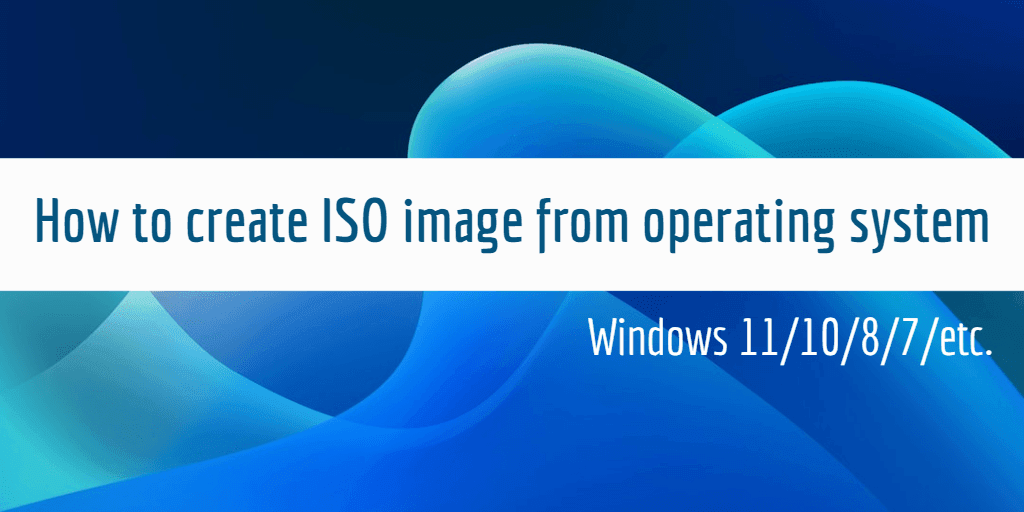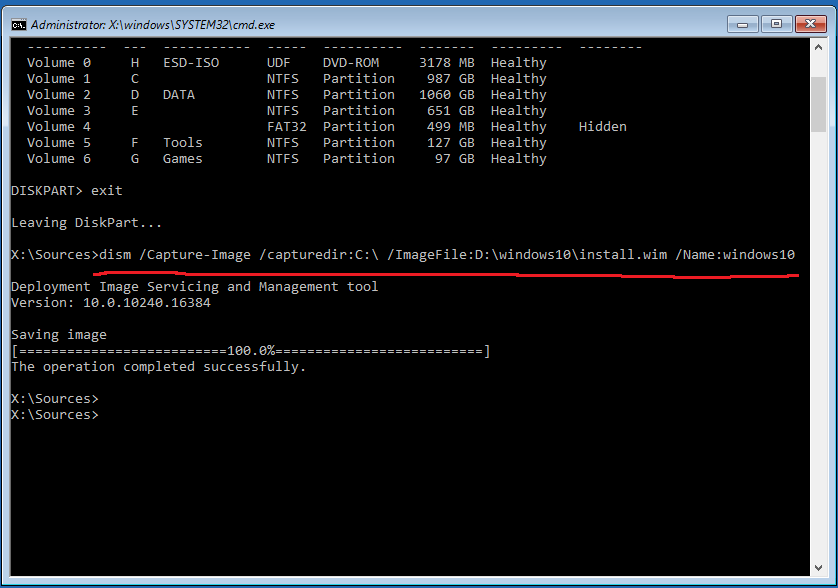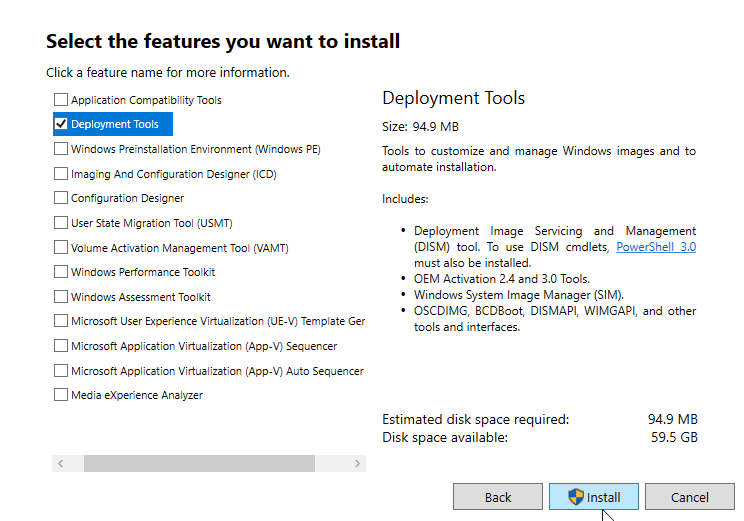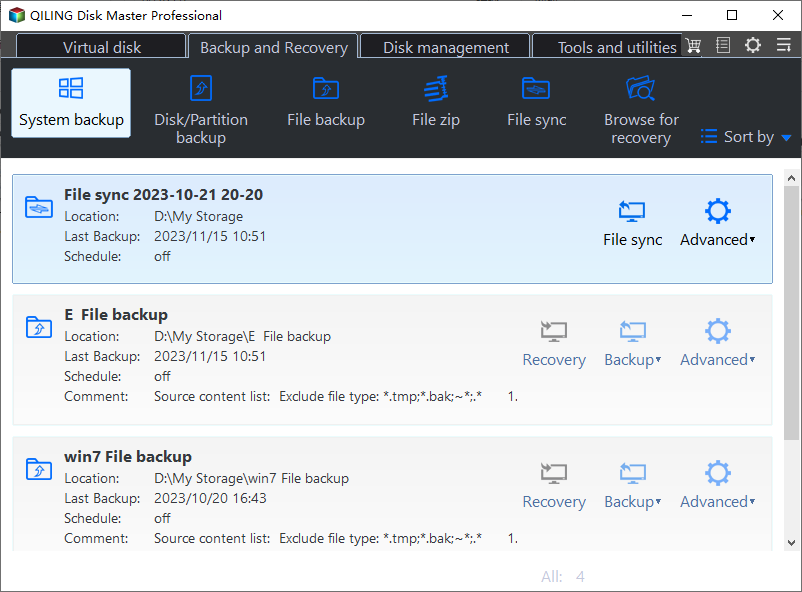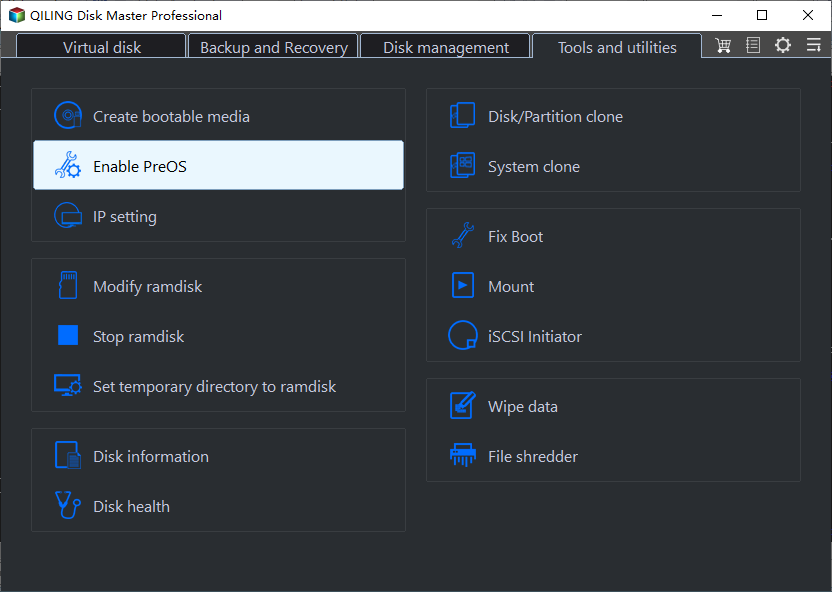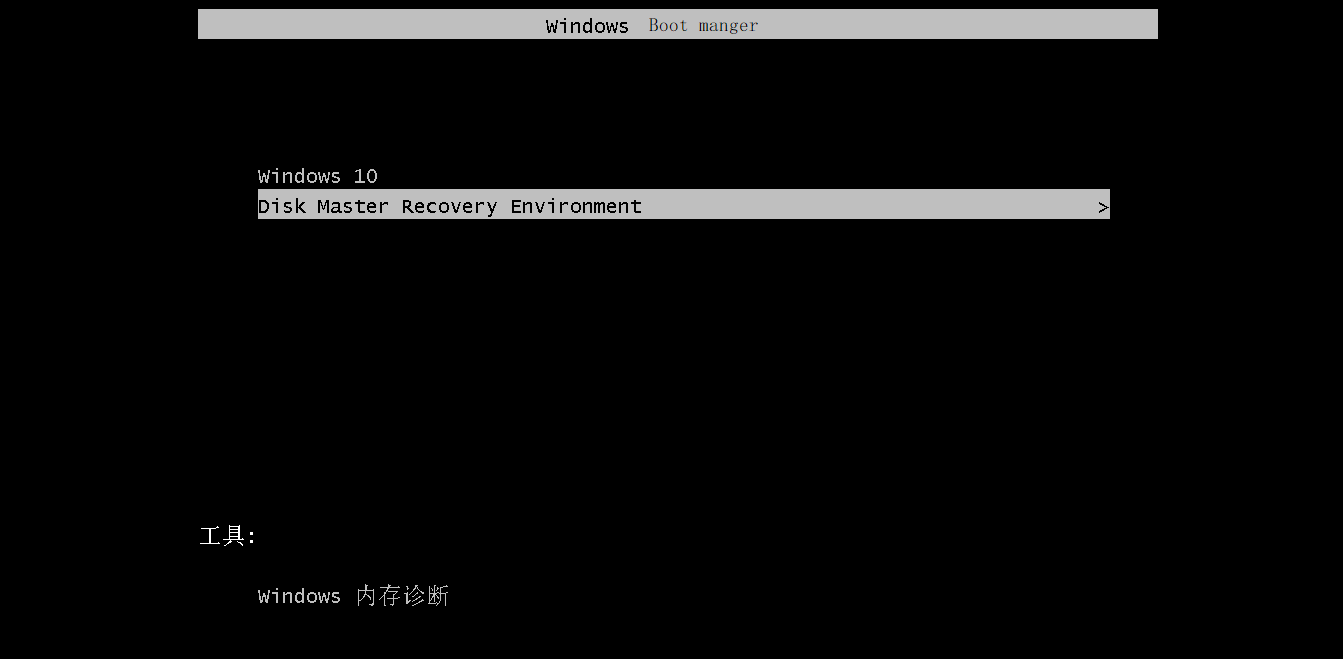How to Create ISO Image from Current Windows 10/11 OS [2 Ways]
How to create an ISO image from my operating system
I have my windows installed as fresh install and the computer works fast and as it was when i bought it. i am wondering about the way that i can make an ISO file from my current installation so that if there is any problem i can use it to restore my computer.
What can an ISO image do for you
When the system crashes due to various problems, a system backup ensures you can quickly roll it back to the state where the backup was taken. And an ISO image created from your operating system offers some more benefits compared with other backup format:
- An ISO image is bootable so you can use it to restore your PC when you have boot issues.
- It is very convenient to deploy it to other devices.
- It can be standalone from backup tools or cloud services.
- You can view its content by mounting it as a virtual drive.
- You can run the ISO image on a virtual machine.
You may wonder: how to create an ISO of my computer? It can actually be done by different ways. Here I will show you 2 of them to create ISO file from Windows 11/10 operating system, and an easier alternative for system recovery.
How to create ISO file from current Windows 10/11
Windows 10/11 has built-in feature DISM that allows you to capture Windows image under recovery environment. To use it, you need a Windows 10/11 recovery media or installation disk.
With that prepared, you can follow the steps below to capture Windows 10 recovery image as well as Windows 11 recovery image. Below will take Windows 10 as an example.
Steps to create ISO image from existing Windows 10 installation:
1. Boot your PC from the recovery media or installation media.
2. If you boot from the installation disc, you can press Shift + F10 at Windows Setup screen to bring out command prompt. If you boot from a recovery media, then select Troubleshoot > Advanced options > Command Prompt.
3. Type the following command and press Enter.
dism /Capture-Image /ImageFile:D:\windows10\install.wim /CaptureDir:C:\ /Name:windows10
Note: The drive letter may change under recovery mode, so the Windows installation drive may not be C: drive. In that case, you need to replace the drive letter "C" with where the Windows installed, and replace “D:\windows10” in ImageFile switch with the target location path where you want to save the custom image.
This process might take a while and you cannot turn off the PC during the time. Please be patient until it finishes.
Note: If you want to use this image in another computer, then it's necessary to remove SID (System Identifier) by sysprep. This step should be done before capturing the image.
How to make the ISO image file bootable
The created image file can be used to reset Windows 10/11 PC. To make it a bootable ISO image, follow these steps, here will take Windows 10 as an example:
1. Open Windows 10 installation disc in File Explorer. Copy its contents and paste to a folder on your internal or external hard drive. For example, copy them to a folder named “iso-files” located on D: drive. You can also mount a Windows 10 ISO and copy its content.
2. Copy the custom image install.wim created before to the Source folder and replace the original one.
3. Download and install the latest Windows Assessment and Deployment Kit (ADK) for Windows 10. You only need to select Deployment Tools to install.
4. Run the following command on an elevated command prompt.
oscdimg.exe -m -o -u2 -udfver102 -bootdata:2#p0,e,b[path of the iso-files]\boot\etfsboot.com#pEF,e,b[path of the iso-files]\efi\microsoft\boot\efisys.bin [path of the iso-files][new location to save the iso image of the current windows]
The command is kind of complicated. To make it easy, you can also use a free tool such as Folder2ISO to create ISO file of Windows 10 out of the folder you created in step 1.
Easier way to prepare system image and bootable WinPE disk
The purpose of creating an ISO image from current operating system is usually making a bootable recovery drive, or deploying system to another computer. If you find above steps troublesome and error-prone, you can try an easier workaround to achieve similar objectives, that is, to create a system image backup and a WinPE bootable media.
Both of the operations can be done with the free backup tool - Qiling Disk Master Standard.
✔ It works in all editions of Windows 11/10/8.1/8/7/Vista/XP, and supports storage devices including internal or external disk, USB flash drive, NAS, cloud, etc.
✔ It contains powerful backup & restore features for system/file/partition/disk, allowing you to ceate a system backup image through several clicks.
✔ With it, you can create a bootable media via USB or CD/DVD, and use it for the local computer and another computer running Windows.
✔ It can create and manage multiple automatic backup tasks with different schedules.
✔ You can use the system image on another computer with the dissimilar hardware restore option in Professional edition.
With the system image in hand, you can easily restore the computer to an earlier state without losing data - this works well even when you want to return Windows 11 to Windows 10. And if the problem was severe enough that you couldn't get into Windows, you can still boot from the bootable media to perform system recovery in WinPE.
Download the free backup software from the Download Center or the button below, then install and launch it.
How to create ISO image from current Windows 10/11
1. If you want to create a system image from your current operating system and save it in an external device, connect it to your computer, and launch the main interface of Qiling Disk Master.
2. Select System Backup under Backup Tab. In daily use, you can also choose other options as needed.
3. The program will automatically include required partitions for a full system restore. Just specify a destination location to store the backup image.
4. You can set up a Backup Schedule to automate the task, or perform incremental or differntial backup in Backup Scheme to backup only changed files each time. After that, click Proceed to execute it.
Auto deletion: You can enable automatic backup cleanup in Backup Scheme to auto delete backup images older than x days (availble in Professional edition). It can help you save storage space.
The created system backup task will show in the Home page. You can either manage it directly, or go to Restore tab for system recovery.
How to create a bootable media
1. Go to Tools tab and choose Create Bootable Media.
2. Then you can select bootable media as USB, CD/DVD, or export the ISO file directly. Click Proceed to start creating the media.
With the created bootable media and system image, you can easily restore Windows to an earlier normal state.
✍ Tips:
✡ If your computer fails without any preparation, you could create the system image and bootable media on another working computer, and use them to perform Universal Restore on the faulty PC.
✡ You can also create a recovery environment in Qiling Disk Master Professional. Once the recovery environment is created and enabled, the "Qiling Disk Master Recovery Environment" option will be added to the system boot menu page so that you can select to start the system from the recovery environment to restore Windows ISO image to new hard drive.
Alterantive: Onekey system backup and system recovery solution
Instead of creating a system image backup and bootable media separately, you can run onekey system backup with Qiling Disk Master. It allows you to save system image on a custom recovery partition which is accessible from Windows PE.
Final words
In addition to creating ISO image from your operating system using DISM, you can also create custom system image and bootable drive via Qiling Disk Master. With it, you can set up a scheduled backup to keep your system image up to date, and choose incremental or differential mode to save only changed files each time.
If you want to protect unlimited computers within company, you can choose Qiling Disk Master Technician. It allows you to deploy or restore system image file to multiple clients over network, perform portable USB backup without installing this software on different computers, etc.
Related Articles
- How to Create an ISO Image of My Hard Drive
- How to Use DISM Offline Repair Windows 10
- How to Create and Use Windows 7 Repair Disk with ISO
- Solved | Can't Backup System to Removable USB Drive in Windows 10/8/7
